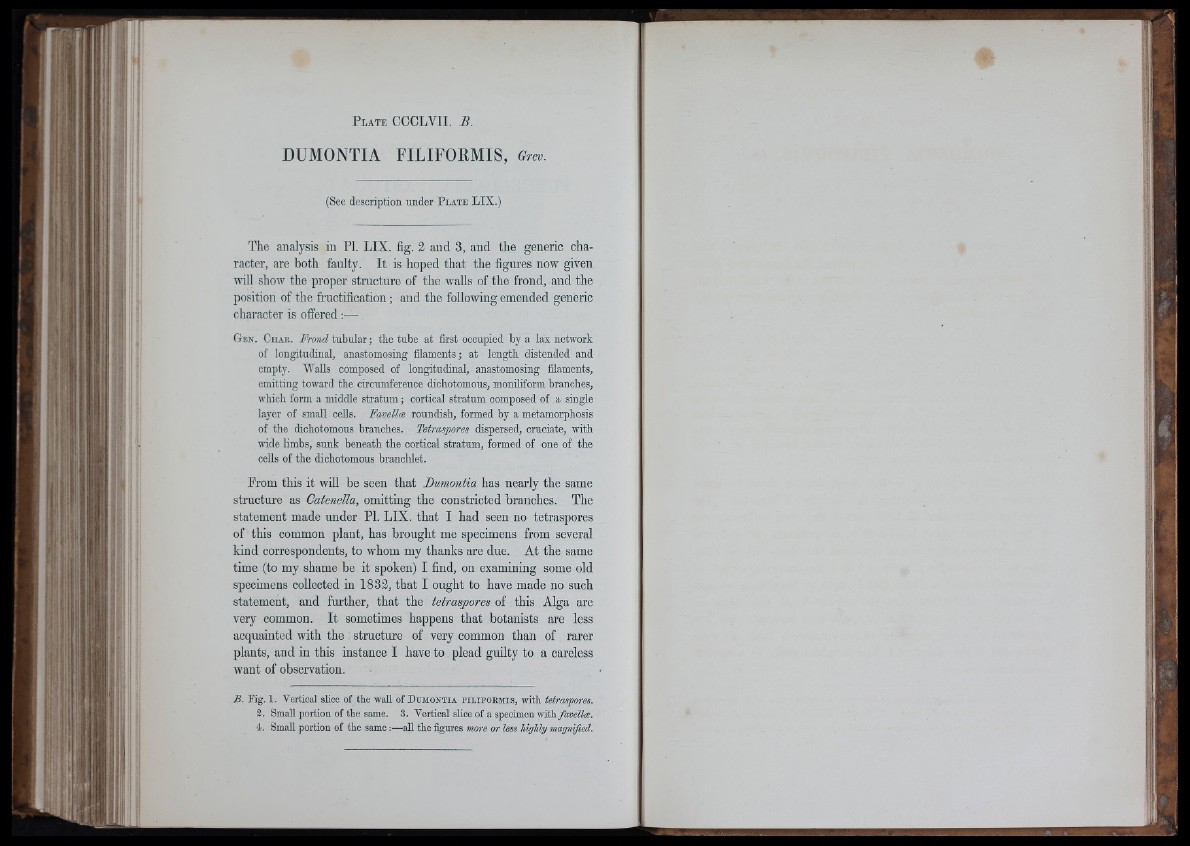
DUMONTIA FILIFORMIS, Grev.
(See description under P late L IX .)
The analysis in PI. LIX. fig. 2 and 3, and the generic character,
are both faulty. It is hoped that the figures now given
will show the proper structure of the walls of the frond, and the
position of the fructification; and the following emended generic
character is offered:—
G e n . Ch a e . Frond tu b u la r ; the tube at first occupied by a lax network
of longitudinal, anastomosing iilaments; at length distended and
empty. Walls composed of longitudinal, anastomosing iilaments,
emitting toward the circumference dichotomous, moniliform branches,
which form a middle s tra tum ; cortical stratum composed of a single
layer of small cells. FaveUa roundish, formed by a metamorphosis
of the dichotomous branches. Tetraspores dispersed, cruciate, with
wide limbs, sunk beneath the cortical stratum, formed of one of the
cells of the dichotomous brancldet.
Prom this it will be seen that Bumontia has nearly the same
structure as Catenella, omitting the constricted branches. The
statement made under PL LIX. that I had seen no tetraspores
of this common plant, has brought me specimens from several
kind correspondents, to whom my thanks are due. At the same
time (to my shame be it spoken) I find, on examining some old
specimens collected in 1832, that I ought to have made no such
statement, and further, that the tetraspores of this Alga are
very common. It sometimes happens that botanists are less
acquainted with the structure of very common than of rarer
plants, and in this instance I have to plead guilty to a careless
want of observation.
B. Mg. 1. Vertical slice of the wall of D umontia f il ifo rm is , with tt..
3. Small portion of the same. 3. Vertical slice of a specimen'with/araSffi.
4. Small portion of the same:—all the figures more or less /" ”
l!